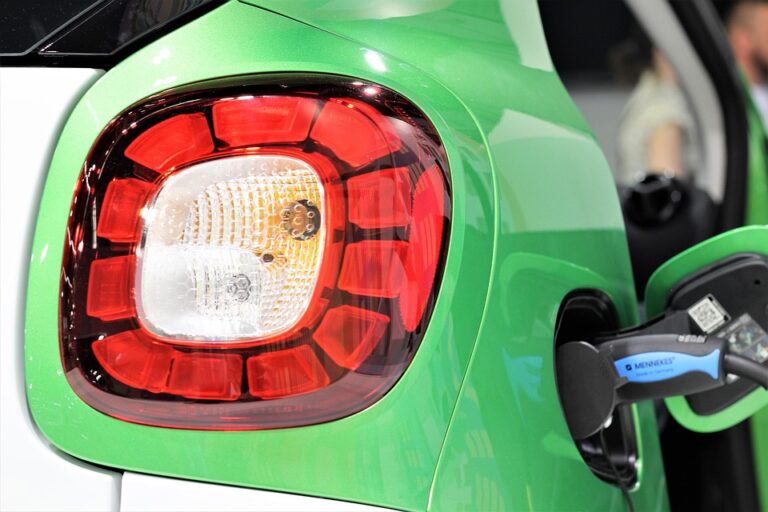Navigating the Future: Innovations in Vehicle Emissions Control Technologies
As global efforts to combat climate change intensify, vehicle emissions remain a critical area of focus. Innovations in vehicle emissions control technologies are setting the stage for a cleaner, greener future. The automotive industry is undergoing a paradigm shift, advancing toward more sustainable practices that promise to reduce the environmental impact of vehicle emissions.
Understanding Vehicle Emissions
Vehicle emissions encompass pollutants produced by the combustion of fossil fuels in vehicles, which significantly contribute to air pollution and climate change. According to the Environmental Protection Agency (EPA), transportation is responsible for over 29% of greenhouse gas emissions in the United States, making it a prime target for reduction efforts. Recent trends indicate that manufacturers are investing heavily in developing technologies that minimize these emissions.
The Importance of Emission Control Technologies
With rising regulatory pressures and increasing public awareness, automobile manufacturers are seeking innovative solutions for effective emission control. Advanced technologies not only enhance vehicle performance but are also essential for meeting stringent government regulations aimed at reducing harmful emissions.
Key Innovations in Vehicle Emissions Control
-
Catalytic Converters:
One of the most established technologies, catalytic converters minimize harmful gases produced by internal combustion engines. By converting carbon monoxide, hydrocarbons, and nitrogen oxides into less harmful emissions, these devices play a crucial role in controlling vehicle emissions. -
Regenerative Braking Systems:
Common in hybrid and electric vehicles, regenerative braking captures energy typically lost during braking and repurposes it to power the vehicle. This not only improves fuel efficiency but also reduces overall emissions. -
Selective Catalytic Reduction (SCR):
SCR technology reduces NOx emissions by injecting a solution of urea into the exhaust stream, converting harmful emissions into harmless nitrogen and water. This technology is becoming increasingly important as diesel engines face tighter emission standards. - Electric and Hybrid Vehicles:
With electric vehicles (EVs) and hybrids on the rise, there is a profound shift toward reducing reliance on fossil fuels. Data from the International Energy Agency (IEA) shows that global electric vehicle sales reached 6.6 million units in 2021, showcasing a 108% increase compared to the previous year. This shift indicates the industry’s commitment to reducing vehicle emissions through electrification.
An Illustration of Progress: The Evolution of the Automotive Industry
Consider the analogy of the switch from incandescent light bulbs to LED lighting. Just as LED bulbs produce more light while consuming significantly less energy, today’s vehicles are becoming increasingly efficient and cleaner. Innovations such as plug-in hybrids marry traditional combustion engines with electric drivetrains, similar to how LEDs harness both filament and fluorescent technologies for optimal performance.
Government Regulations and Industry Standards
Government interventions are crucial in driving the adoption of vehicle emissions control technologies. For example, the European Union’s stringent Euro 6 regulations mandate lower limits for nitrogen oxides and particulates, pushing manufacturers to integrate advanced emissions technologies. In the United States, the Clean Air Act empowers the EPA to set and enforce limits on emissions, reinforcing the importance of innovation in vehicle emissions control.
The Road Ahead: Future Trends
Looking ahead, the automotive industry is likely to see a growing emphasis on sustainable fuel alternatives. Innovations like hydrogen fuel cells present exciting opportunities for reducing vehicle emissions, potentially offering a zero-emission solution. Additionally, the rise of artificial intelligence (AI) in vehicle design and production could lead to smarter vehicles that not only perform better but also emit fewer pollutants.
Potential Challenges to Overcome
Despite these innovations, challenges remain. The transition toward cleaner technologies requires substantial investment in infrastructure and consumer acceptance. To ensure success, collaboration between governments, manufacturers, and consumers is essential in navigating this transition.
Conclusion
As the world strives against climate change, advancements in vehicle emissions control technologies are more critical than ever. With promising innovations and a commitment to regulatory compliance, the automotive industry is poised to make significant strides in reducing vehicle emissions and, consequently, improving air quality.
For further insights, explore our articles on The Role of Electric Vehicles in Combatting Climate Change and Innovations in Sustainable Automotive Design. For more data on the global vehicle emissions landscape, visit the EPA website and the International Energy Agency.
Images:
- Image of a vehicle with an advanced catalytic converter; Alt text: "Vehicle Emissions Control Technologies – Catalytic Converters"
- Image of various electric vehicles on the road; Alt text: "Electric Vehicles and Their Role in Vehicle Emissions Reduction"
By maintaining a focus on innovation and sustainability, we can navigate the future of the automotive industry with hope and determination, paving the way for a cleaner, healthier planet for generations to come.


